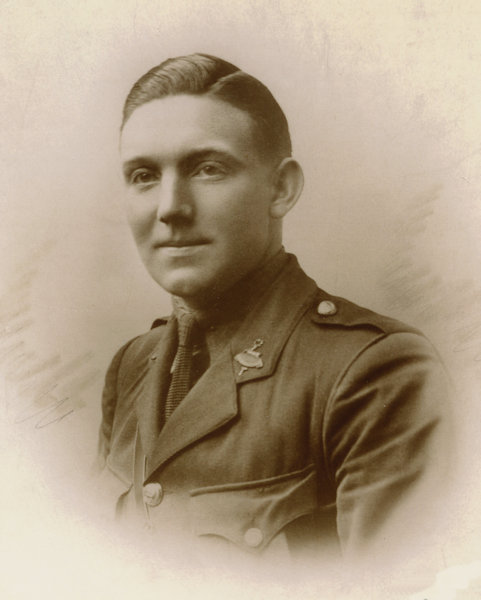Name
Frank Edward Young (VC)
Conflict
First World War
Date of Death / Age
18/09/1918
23
Rank, Service Number & Service Details
Second Lieutenant
1285
Hertfordshire Regiment
1st Bn.
Awards: Service Medals/Honour Awards
Not Yet Researched
Victoria Cross
Cemetery/Memorial: Name/Reference/Country
HERMIES HILL BRITISH CEMETERY
III. B. 5.
France
Headstone Inscription
Not Researched
UK & Other Memorials
Hitchin Town Memorial, 4 Co' Hertfordshire Reg' Territorials’ Memorial, Hitchin, Holy Saviour Church War Memorial, Radcliffe Rd., Hitchin, Town Hall Memorial, Hitchin, St Mary's Church Roll of Honour, Hitchin, Frank Young Close, Hitchin, Hertfordshire Regimental Memorial, All Saints Church, Hertford
Pre War
Wartime Service
His father had attested into the Hertfordshire Regiment for overseas service when war broke out and became Company Sergeant Major 3292 Frank Young by the time the battalion were mobilised to the Western Front in early November 1914.
Frank (jnr) went to France, landing there in 21st January 1915 with a reinforcement draft and was posted to the 1st/1st Hertfords became a regimental scout. Both father and son saw service through successive engagements in 1915, including the Battles of Festubert and Loos and Frank (snr) was mentioned in dispatches. During this period Frank (jnr) earned a reputation as an expert bomber and was promoted to Sergeant and then in 1916 he was appointed as a bombing instructor at the Rouen Central Bombing School, where he was wounded in an accident.
After a period of recovery in Cardiff Military Hospital, he was posted to the 3rd/1st Hertfordshire Regiment, before being selected for officer training. He was subsequently commissioned as a Second Lieutenant on 27th April 1917 and was posted to a reserve battalion of the Bedfordshire Regiment in Britain.
He became intrigued by the Royal Flying Corps and undertook six weeks of ground training before beginning the air training. A flying accident left him badly shaken and he returned to the Bedfordshires. He then visited his mother in Hitchin before returning to France and re-joining the 1st/1st Hertfordshires in France on 12th September 1918, where he was appointed commander of No. 4 Company on arrival (this was the renamed ‘D’ Company – his original Company). This was just before the Battle of Havrincourt.
His Victoria Cross was awarded for his actions in the front line near a copse called Triangle Wood, south-east of Havrincourt. It was in the aftermath of Allied success at the Battle of Havrincourt and late in the afternoon of 18th September 1918. After an intense artillery barrage, the Germans attacked his position. They entered the trenches, but Frank’s actions resulted in a successful defence and ultimately the Battalion's line held and the Germans withdrew. Frank’s citation reads:
The London Gazette" No. 31067, dated 13th Dec., 1918, records the following:-"For most conspicuous bravery, determination and exceptional devotion to duty on 18th September, 1918, south-east of Havrincourt, when during an enemy counter-attack and throughout an extremely intense enemy barrage he visited all posts, warned the garrisons and encouraged the men. In the early stages of the attack he rescued two of his men who had been captured, and bombed and silenced an enemy machine gun. Although surrounded by the enemy, 2nd Lt. Young fought his way back to the main barricade and drove out a party of the enemy who were assembling there. By his further exertions the battalion was able to maintain a line of great tactical value, the loss of which would have meant serious delay to future operations. Throughout four hours of intense hand-to-hand fighting 2nd Lt. Young displayed the utmost valour and devotion to duty, and set an example to which the company gallantly responded. He was last seen fighting hand to hand against a considerable number of the enemy."
His body was initially lost, but was found on the 27th September by the 1st/5th Manchesters. Despite being last seen fighting hand to hand and outnumbered, he appeared to have been killed a shrapnel wound to his head.
The men buried the body where they found it and marked it with a cross, but later his grave was found by Second Lieutenant Males (from Stevenage) who sought and received permission to exhume the body to be re-buried in Hermies Hill Cemetery, where he still lies today.
Frank’s parents’ home address was recorded as 46, Wood Avenue, Folkestone in Kent, which would probably have been their temporary address whilst his father was at No.3 Rest Camp in Folkestone early in 1919. Later his father's medals were sent to Pirton Cottage, Pirton, near Hitchin, Hertfordshire and Frank's were sent to his mother at Verulam Rd, Hitchin, which was where they appear to have moved to after Folkestone.
Additional Information
Frank's story it dealt with in more detail in this site's Archive HERE.
Acknowledgments
Adrian Dunne, Research conducted by the Royal British Legion, Hitchin branch Wikipedia 'The Story of the Bedfordshire and Hertfordshire Regiment, Volume II' Royston Crow newspaper, Bedfordshire Regiment in the Great War © Steven Fuller, 2003 to 2013), Jonty Wild



